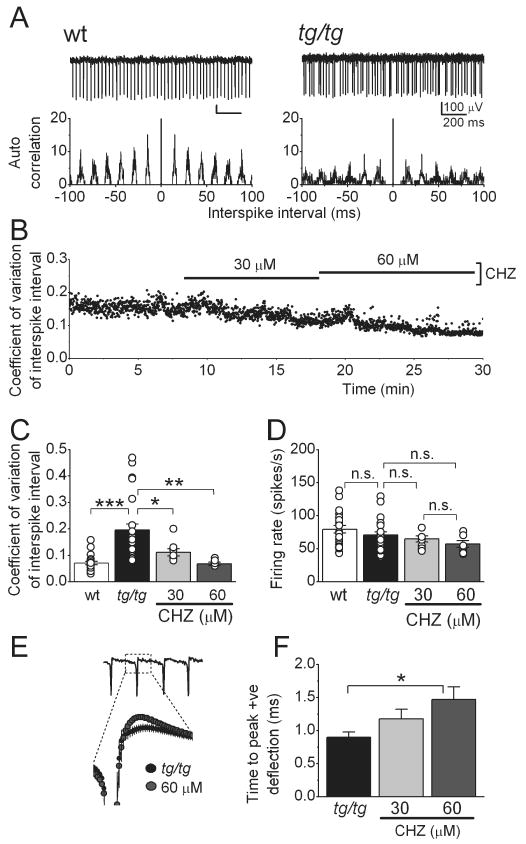Figure 1. Chlorzoxazone decreases the irregularity of the intrinsic pacemaking of tottering Purkinje cells.

(A) Raw traces from extracellular recordings from wild-type (+/+) and tottering (tg/tg) Purkinje cells, with their interspike interval autocorrelograms below. Note the irregular firing of the tg/tg cell.
(B) Chlorzoxazone (CHZ) dose-dependently decreased the variation of the interspike interval in a tg/tg Purkinje cell whose spontaneous activity was extracellularly recorded.
(C) Average and individual values (circles) of the coefficient of variation of the interspike intervals in +/+ and tg/tg Purkinje cells. Note the higher values and the wider distribution of coefficient of variation in the mutant cells. (*) p<0.05, (**) p<0.01, (***) p<0.001 (One-way ANOVA, followed by Bonferroni correction), n=24 cells for tg/tg mice and n=19 cells for +/+ mice.
(D) Average and individual (circles) firing rates of the +/+ and tg/tg Purkinje cells shown in C, “n.s.” denotes not significant.
(E) CHZ increased the magnitude of the positive deflection of the spikes recorded extracellularly in tg/tg Purkinje cells. The expanded figure shows an averaged trace of the activity of 7 cells, in control and after adding CHZ 60 μM.
(F) Average magnitude of the positive deflection in control and after adding CHZ in increasing concentrations. (*) p<0.05 (One-way ANOVA, followed by Bonferroni correction).
